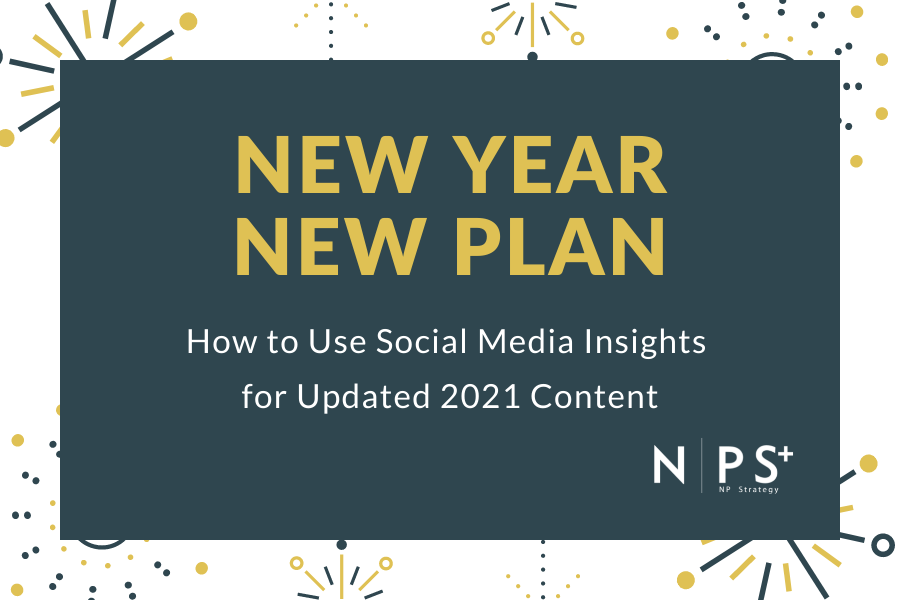New Year New Plan: How to Use Social Media Insights for updated 2021 Content
December 31, 2020

It’s easy to get complacent when planning your social media content calendar, especially when many events have shifted or been canceled due to COVID-19. Though we cannot control what happens in 2021, we can control our approach for fresh, targeted content that keeps your current followers happy and entices new ones.
So, how can you break the social marketing monotony? Use analytics from this past year to gain insights into your audience’s behavior. Analytics are imperative to properly analyze not only who your messages reach but how to best maximize those interactions.
Demographics
Most major platforms offer some level of insight into your audience demographics. For instance, Facebook can show you details such as age, gender, top countries and languages. Knowing more about your primary content consumers can tell you how to meet their needs and know who to target to join the conversation.
Social media should be seen as a means of conversation with every post. Posts with open-ended questions, polls that encourage participation, or shout-outs to a particular location or employee will be more likely to engage or be shared by viewers.
It’s helpful to review a year-end report before starting your calendar for the new year; put those patterns into strategic plans!
Performance Engagement
Part of the analysis is evaluating how well particular posts performed. Beyond the number of likes and comments, take a look at the interactions. What kinds of photos garnered the most engagement? In your videos, what was the average watch time?
Those answers can inform you of what your audience will want to see more or less of in 2021. It also is helpful to keep videos simple and brief. In an instantaneous world, our distractions are limitless and average attention spans are about eight seconds. However, with social media videos, that time is even shorter. A 2020 Nielson Research study found that “38% of brand recall, 23% of brand awareness and 25% of purchase intent result from video impressions that are less than two seconds long.”
You’ll want to keep video messages concise, with the most important and most interesting points coming in the first five seconds. Also try to find ways to break down your messages into multiple visual aides, with an infographic, bullet points or a meme (if appropriate).
Time of Day
The time of day you post is just as important as the post itself. Knowing when the bulk of your audience is online is helpful for day-to-day posts, or when launching a large campaign. On average, people in the United States spend nearly two and a half hours on social media daily, according to global research by Statistica.
Typically, there’s an influx in social usage in the mornings, before 9 a.m., and around noon, while folks are on their lunch break. Predictably, usage declines on Friday evenings, as most people check out for the weekend.
Social media insights can show you hour-by-hour when your current followers are online compared to the global average. Being strategic about these insights in the new year can help drive your messaging or branding to the right person. Be sure to merge your creative content ideas with a statistical strategy in 2021 to ring in the New Year right!
Recent Highlights
« Back to All HighlightsJanuary 14, 2025
Crisis Management Lessons from Netflix’s Top Show: Squid Game
In Netflix’s Squid Game, the platform’s most-watched debut series ever, each episode’s challenge serves as a powerful metaphor for survival, strategy, and adaptability. While crises in the business world may…
Read MoreJanuary 10, 2025
How to Get More People Into Your Sales Funnel With Organic Social Media
Building a sales funnel with organic social media is one of the most cost-effective ways for entrepreneurs, founders and business owners to attract, engage, and convert sales leads. By strategically…
Read More